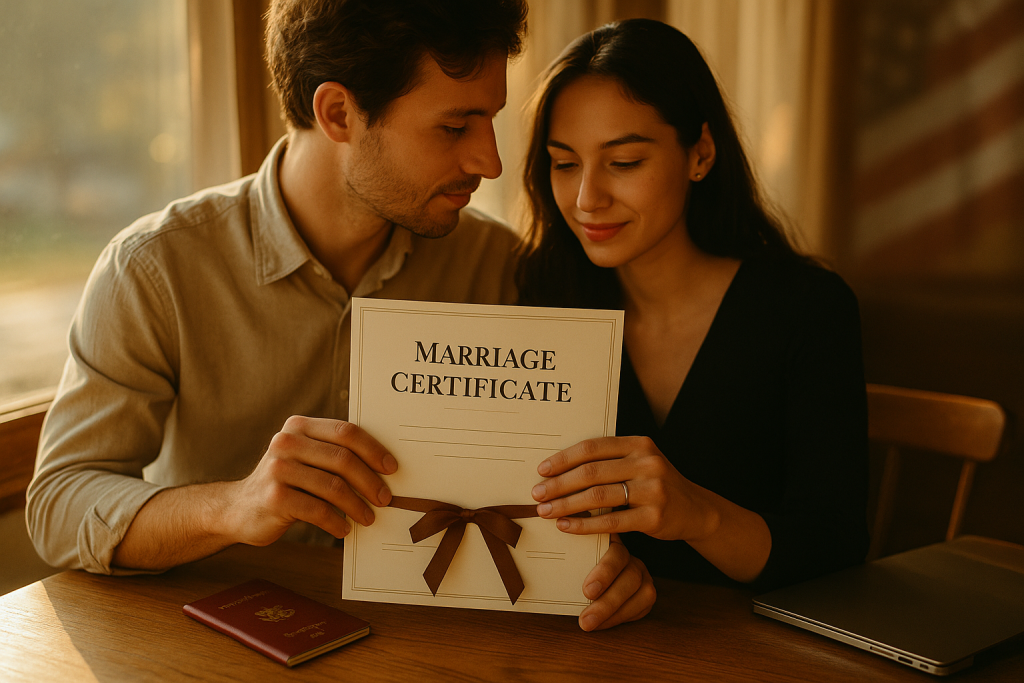Getting married is a milestone — but getting your documents ready for USCIS can feel like a second job. If your marriage license was issued in another country or in a foreign language, don’t worry — we’re here to guide you through the legal translation process and make sure you’re fully prepared.
At Virtual Same Day Marriage, we specialize in helping couples navigate USCIS requirements with ease — and that includes connecting you with legal translation services, notarized legal translation, and a professional legal document translator who knows exactly what’s needed.
Why Certified Legal Translation Matters for USCIS
The U.S. government doesn’t just accept any translated document. They require:
- Accurate, word-for-word translations
- A signed certificate of translation
- Credentials of the translator
- Optional: notarization, depending on your case
Working with a professional legal document translator ensures that your submission won’t be delayed or rejected.
What Kind of Documents Require Translation?
You might need to translate:
- Your foreign marriage certificate
- Divorce decrees
- Birth certificates
- Death certificates (for prior spouses)
- Police or court records
For USCIS, all translations must be complete, legible, and include a signed certification.
Choosing the Right Legal Translation Services
When shopping for legal translation services, look for:
- Native-speaking translators
- Experience with USCIS standards
- Fast turnaround times
- Option for notarized legal translation
At Virtual Same Day Marriage, we work only with trusted professionals who meet these standards.
What’s the Difference Between Certified and Notarized Translations?
A certified translation includes a signed statement by the translator affirming the accuracy of the translation.
A notarized legal translation is when that certificate is notarized by a public notary. While USCIS doesn’t require notarization, some foreign consulates or agencies might.
How to Submit Your Translated Documents to USCIS
Once translated, your documents can be submitted with:
- Form I-130 (Petition for Alien Relative)
- Form I-485 (Adjustment of Status)
- Form DS-260 (for consular processing)
Upload a clear scan of the translated marriage license and the certificate of translation. Don’t forget to include the original foreign-language version too.
Internal Links to Boost Your Knowledge:
- How to Submit a Translated Marriage Certificate to USCIS
- How to Translate Immigration Forms for Virtual Marriage Applications
- How to Prepare USCIS Documents After a Virtual Marriage
External Resources:
FAQs
Q: Does USCIS require a notarized translation?
A: No, USCIS only requires a certified translation. Notarization is optional.
Q: Can I translate my marriage license myself?
A: No. USCIS requires a third-party certified translator — it cannot be translated by a family member or the applicant.
Q: How long does a certified translation take?
A: Most services deliver within 24–72 hours depending on the document type.
Q: What languages do you support?
A: We support Spanish, French, Arabic, Chinese, Portuguese, Russian, Hindi, and more.
Q: Can I submit my translation digitally?
A: Yes, USCIS accepts uploaded PDF copies of the translated document and its certification.
Ready to File? We Can Help!
If you need help with your legal translation services, notarized legal translation, or finding a professional legal document translator — reach out to us today. Virtual Same Day Marriage makes this process smooth, fast, and stress-free.
📞 Call or text us anytime or visit virtualsamedaymarriage.com to get started!



